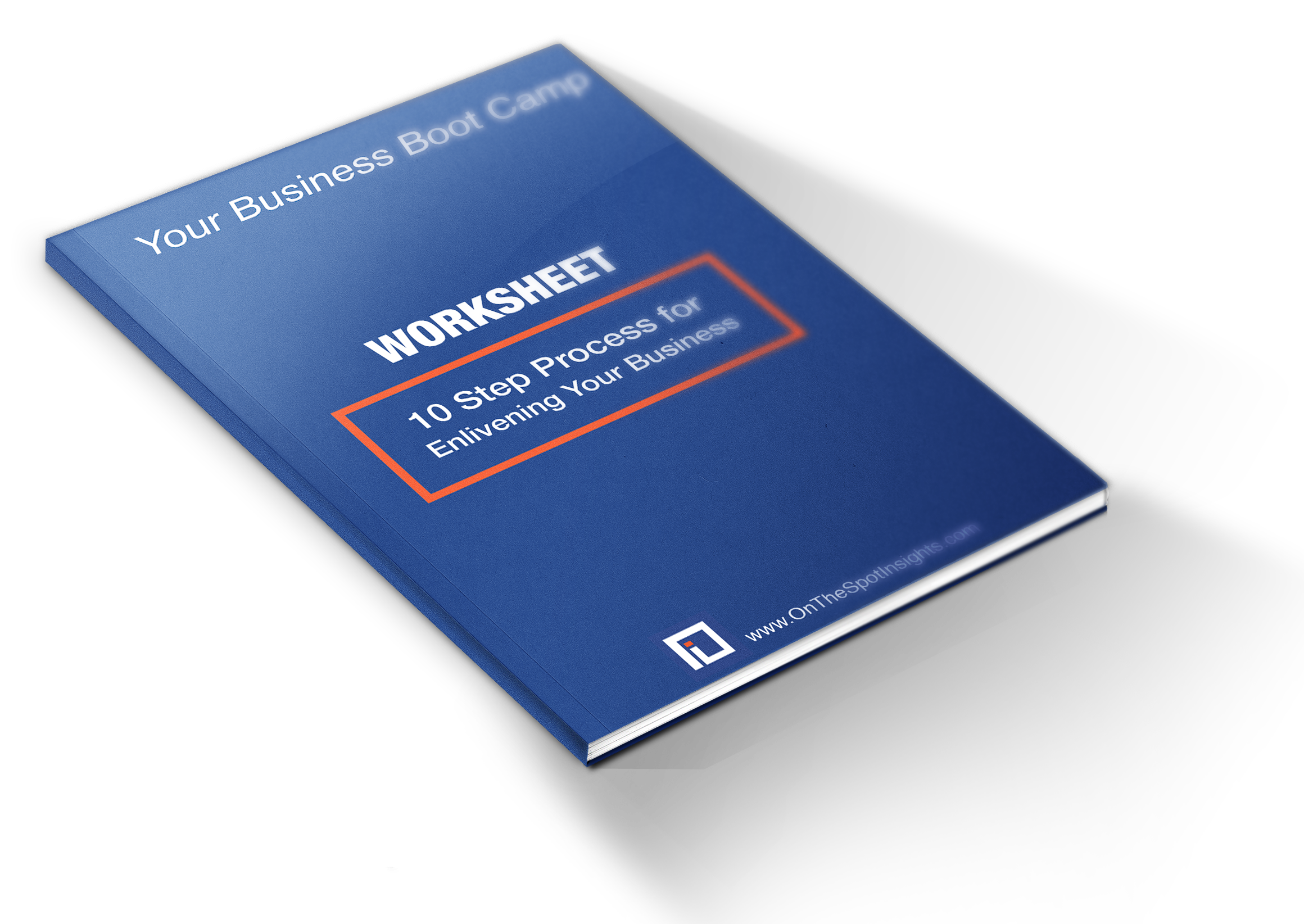What’s The Central Idea Of Your Business?

Free 10 Step Business Boot Camp
This worksheet will take you through your business planning in 30 minutes and tell you where you can improve your business and achieve the results you want.
What’s the main value you bring to clients — the customer needs you satisfy — the real reason you’re in business?
It’s a question worth asking. Consider these three examples:
- A firm owned and rented out fully-equipped recording studios to bands and singers. The principals had to learn and implement noise abatement measures so as not to disturb their neighbors. This led them to market their newly-acquired noise control skills to clubs and other businesses where noise could be a problem. They ultimately sold the recording studios to concentrate full-time on noise abatement.
- Another company works with biotech companies to help manage clinical trials of pharmaceutical products, which has led them to set up a second separate business in the creation, maintenance and use of patients’ electronic medical records.
- A lawyer specialized in elder law, which involved establishing guardianships and handling negotiations with skilled nursing facilities for aging clients. She had to work closely with the middle-aged children of these clients, and discovered among them an awakened interest in estate planning for themselves. She took on a partner to focus on that area of practice.
Our work in one area often leads us in a different but related direction — new products and services we can offer our existing clients and that can attract new ones.
Sometimes this new work is a natural fit for our organization, and can be incorporated into our primary work. At others it’s best pursued as a separate business. Other times, it presents the opportunity to leave a shrinking market to work afresh in a new and growing one. At still others, it would be a distraction that would take us away from our main focus, and should be left alone.
How do we decide whether pursuing a particular new product or service will help move us in the direction we want to go?
It’s critical to have a clear picture of who we are as a business now and who we want to be going forward. If the owners of the recording studio had seen themselves strictly as “property managers” or “landlords” they might not have become aware of the potential of the noise abatement business. It so happened that, with the development of new and less expensive hardware and software for recording, artists could record their own music in their own space, and had less need to rent professionally-managed studios. The owners saw the opportunity to use the skill and experience they developed in noise abatement to move successfully into a new business as the market for their old one was closing down.
If the company in the pharma industry saw itself as “a clinical trials company” it might have missed seeing the opportunity for a specialized use the patient information they were already using to help with clinical trials.
And if the attorney saw practice exclusively as “elder law” she might have missed the opportunity to address the estate planning needs of the next generation.
Back in 1980, a thin-but-powerful volume, Top Management Strategy by Benjamin B. Tregoe and John W. Zimmerman, suggested that engaging in an analysis of your business to determine its driving force could provide a helpful template for making decisions about expanding and enhancing our business offerings. Every company has products and services, a sales and marketing function, a distribution system, a means of servicing products already sold. To be successful, you have to provide all these. But chances are, one of these areas is the thing that really is your primary focus, that excites you, that you do really well — something the market would miss if you weren’t out there doing it.
In the decades since the publication of that book, we’ve seen that most companies focus on their core competencies, and outsource other functions. But a laser-like focus on “one thing” can cause business owners to miss big opportunities to leverage existing capabilities in new directions. Unless you’ve got a clear and current picture of who you are as a company, the products and services you would consider might not be obvious. To be able to pick and choose wisely requires a commitment to regularly taking a fresh inventory of all the things you’re doing right then, and getting new insights about what you’re doing really well and where your true interests lie. The answers you get today may be quite different from what they were when you started the business, or even one year ago.
If you decide the driving force of your company is building products, you might not want to add another company’s product to your distribution system. (But you might pursue the opportunity to offer one of your products through the distribution system of another company, even a competitor.) If you have a big investment in a sales force, you might enter into an agreement where you offer to your customers the complementary product of another company. Or, if you have a robust call center, you might look to offer other products, even from another industry.
What’s the driving force — the central idea — of your business? Great product development? Powerful marketing and distribution? Superior, responsive after-sale service and support? It’s a question you should ask — not just at the beginning when you start up a new business, but at least once a year and again every time you have to make a decision on any new business opportunity that might involve the expansion, contraction or refocusing of your business efforts.
